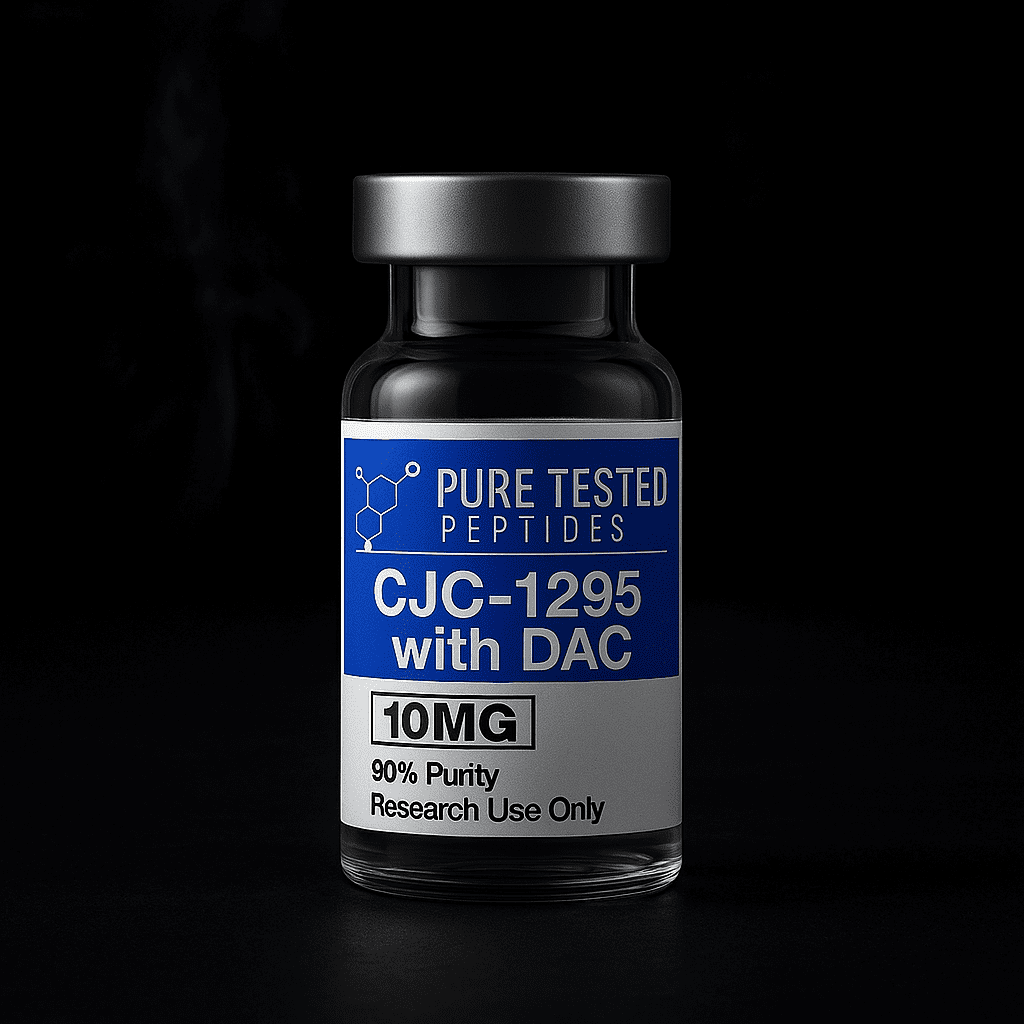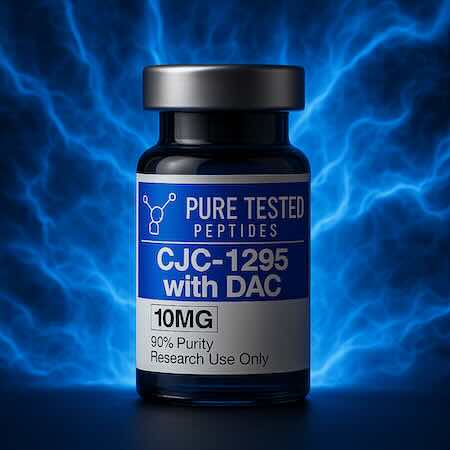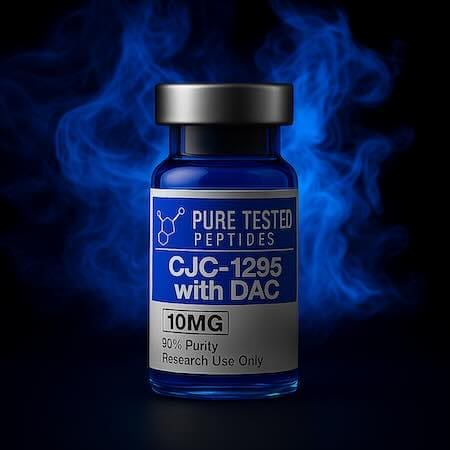
cjc 1295 with dac vs without dac

CJC-1295 (GHRH Analog): Mechanism & Comparison of DAC vs. No-DAC in Animal Studies
This article summarizes peer-reviewed findings on CJC-1295, a long-acting analog of growth-hormone-releasing hormone (GHRH). We focus on mechanism and animal-model evidence comparing DAC (Drug Affinity Complex) variants versus short-acting GHRH(1-29) analogs (often colloquially called “no-DAC”). No dosages or usage regimens are discussed, and no uses outside physician-directed care are suggested. Cjc 1295 with dac vs without dac is a common query among researchers when looking for which is more effective at the projected and objective goals in mind.
- Class Long-acting GHRH analog designed to enhance endogenous GH release via the pituitary GHRH receptor.
- Intent Prolong GH–IGF-1 axis activation vs. native GHRH(1-29), which is rapidly cleared. [oai_citation:0‡PMC](https://pmc.ncbi.nlm.nih.gov/articles/PMC423714/?utm_source=chatgpt.com) [oai_citation:1‡PubMed](https://pubmed.ncbi.nlm.nih.gov/2866222/?utm_source=chatgpt.com)
- DAC “DAC” denotes a chemical strategy enabling in vivo binding to serum albumin to extend peptide residence time. [oai_citation:2‡PMC](https://pmc.ncbi.nlm.nih.gov/articles/PMC2787983/?utm_source=chatgpt.com) [oai_citation:3‡PubMed](https://pubmed.ncbi.nlm.nih.gov/23639804/?utm_source=chatgpt.com)
Mechanism of Action & Half-Life Extension
GHRH receptor agonism
CJC-1295 is based on a tetrasubstituted GHRH(1-29) core that activates the pituitary GHRH receptor, increasing pulsatile GH secretion and secondarily IGF-1 production—core features of the GH–IGF-1 axis. [oai_citation:4‡Oxford Academic](https://academic.oup.com/jcem/article/91/3/799/2843281?utm_source=chatgpt.com) [oai_citation:5‡PubMed](https://pubmed.ncbi.nlm.nih.gov/16352683/?utm_source=chatgpt.com)
What “DAC” changes
DAC technology introduces a reactive handle that allows covalent association with endogenous serum albumin after administration. This albumin coupling slows clearance and markedly prolongs exposure compared with short-acting GHRH(1-29) analogs. [oai_citation:6‡PMC](https://pmc.ncbi.nlm.nih.gov/articles/PMC2787983/?utm_source=chatgpt.com) [oai_citation:7‡Oxford Academic](https://academic.oup.com/jcem/article-pdf/91/3/799/10779632/jcem0799.pdf?utm_source=chatgpt.com)
Why short-acting analogs are brief
Native GHRH(1-29) and early analogs exhibit rapid enzymatic degradation and short plasma half-lives (minutes) in both animals and humans, leading to transient GH peaks. [oai_citation:8‡PMC](https://pmc.ncbi.nlm.nih.gov/articles/PMC423714/?utm_source=chatgpt.com) [oai_citation:9‡PubMed](https://pubmed.ncbi.nlm.nih.gov/2866222/?utm_source=chatgpt.com)
Animal Data: DAC vs. Short-Acting GHRH(1-29) Analogs
Rats: albumin-binding analogs (including CJC-1295) vs. hGRF(1-29)
In male Sprague–Dawley rats, investigators screened albumin-binding bioconjugates of GHRH(1-29). The candidate that became CJC-1295 produced a substantially greater GH area-under-the-curve over 2 hours than native hGRF(1-29), consistent with enhanced exposure and receptor engagement due to albumin association. [oai_citation:10‡PubMed](https://pubmed.ncbi.nlm.nih.gov/15817669/?utm_source=chatgpt.com)
Short-acting GHRH(1-29) analogs
By contrast, native or minimally modified GHRH(1-29) shows short elimination half-lives after IV dosing in rats (on the order of ~10 minutes in classic pharmacokinetic work), aligning with brief GH elevations unless repeatedly administered. [oai_citation:11‡PubMed](https://pubmed.ncbi.nlm.nih.gov/2866222/?utm_source=chatgpt.com)
Mechanistic interpretation
The key differentiator in animal models is exposure time: DAC-enabled analogs (CJC-1295) leverage albumin to extend the window of GHRH receptor stimulation, whereas short-acting GHRH(1-29) analogs produce transient receptor activation. This pharmacokinetic separation explains the larger GH AUC seen with the DAC construct under matched experimental windows. [oai_citation:12‡PubMed](https://pubmed.ncbi.nlm.nih.gov/15817669/?utm_source=chatgpt.com) [oai_citation:13‡PMC](https://pmc.ncbi.nlm.nih.gov/articles/PMC2787983/?utm_source=chatgpt.com)
Human Context (Mechanistic Alignment, Not Treatment Advice)
Although this article centers on animal data, clinical pharmacology papers help illustrate the same mechanism: in healthy adults, long-acting CJC-1295 increased mean (and trough) GH and sustained IGF-1, while preserving pulsatility—consistent with extended but physiologic stimulation of the pituitary. These observations echo the albumin-binding rationale demonstrated in animals. [oai_citation:14‡PubMed](https://pubmed.ncbi.nlm.nih.gov/16352683/?utm_source=chatgpt.com)
Limitations & Species Considerations
Species differences in albumin (including polymorphisms and binding behavior) can influence the magnitude of any albumin-mediated half-life extension; results in one species may not translate quantitatively to another. [oai_citation:15‡PMC](https://pmc.ncbi.nlm.nih.gov/articles/PMC3231859/?utm_source=chatgpt.com) [oai_citation:16‡PubMed](https://pubmed.ncbi.nlm.nih.gov/23639804/?utm_source=chatgpt.com)
Additionally, terminology like “no-DAC CJC-1295” is used informally in some communities to describe short-acting GHRH(1-29) analogs (e.g., “modified GRF(1-29)”). In primary literature, these are usually referenced generically as GHRH(1-29) analogs rather than “CJC-1295 without DAC.” [oai_citation:17‡PubMed](https://pubmed.ncbi.nlm.nih.gov/9513600/?utm_source=chatgpt.com)
Selected References (PubMed/PMC)
- Teichman SL et al. Prolonged stimulation of GH and IGF-1 by CJC-1295 in healthy adults (JCEM, 2006). PubMed/Full text. [oai_citation:18‡PubMed](https://pubmed.ncbi.nlm.nih.gov/16352683/?utm_source=chatgpt.com) [oai_citation:19‡Oxford Academic](https://academic.oup.com/jcem/article/91/3/799/2843281?utm_source=chatgpt.com)
- Jetté L et al. hGRF(1-29)–albumin bioconjugates in rats; identification of CJC-1295 (Endocrinology, 2005). [oai_citation:20‡PubMed](https://pubmed.ncbi.nlm.nih.gov/15817669/?utm_source=chatgpt.com)
- Sackmann-Sala L et al. Activation of the GH/IGF-1 axis by long-acting GHRH analogs (review) (2009). [oai_citation:21‡PMC](https://pmc.ncbi.nlm.nih.gov/articles/PMC2787983/?utm_source=chatgpt.com) [oai_citation:22‡PubMed](https://pubmed.ncbi.nlm.nih.gov/19386527/?utm_source=chatgpt.com)
- Ionescu M et al. Pulsatile GH secretion persists during CJC-1295 (2006). [oai_citation:23‡PubMed](https://pubmed.ncbi.nlm.nih.gov/17018654/?utm_source=chatgpt.com)
- Frohman LA et al. Rapid enzymatic degradation of GHRH (mechanistic basis for short half-life) (1986). [oai_citation:24‡PMC](https://pmc.ncbi.nlm.nih.gov/articles/PMC423714/?utm_source=chatgpt.com)
- Rafferty B et al. GHRH(1-29) pharmacokinetics in rats: brief half-lives (1985/1988). [oai_citation:25‡PubMed](https://pubmed.ncbi.nlm.nih.gov/2866222/?utm_source=chatgpt.com)
- Sleep D et al. Albumin as a platform for drug half-life extension (review) (2013). [oai_citation:26‡PubMed](https://pubmed.ncbi.nlm.nih.gov/23639804/?utm_source=chatgpt.com)
- Schally AV et al. Development of GHRH agonists/antagonists (review) (2024). [oai_citation:27‡PMC](https://pmc.ncbi.nlm.nih.gov/articles/PMC12137413/?utm_source=chatgpt.com)


